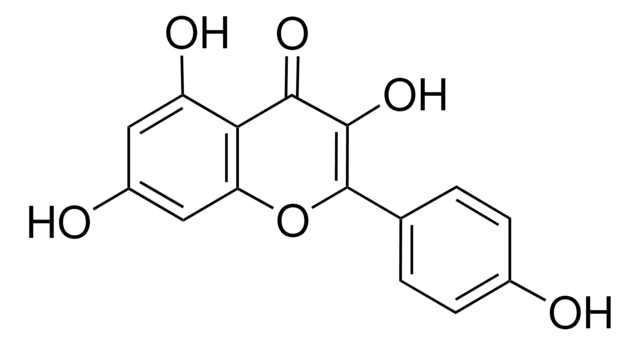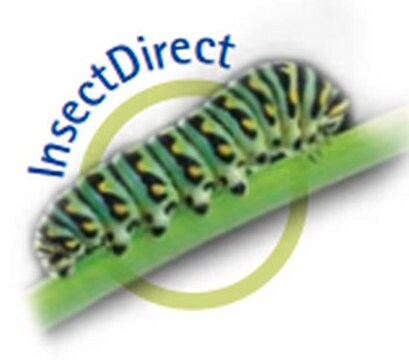Kluczowe dokumenty
SBR00016
Aminopterin Ready Made Solution
50 mg/mL in DMSO
Synonim(y):
(S)-2-{4-[(2,4-Diaminopteridin-6-yl)methylamino]benzamido}pentanedioic acid, 4-Amino-PGA, 4-Aminofolic acid, 4-Aminopteroyl-L-glutamic acid
About This Item
Polecane produkty
Próba
≥85%
Poziom jakości
Formularz
liquid
warunki przechowywania
protect from light
stężenie
50 mg/mL in DMSO
rozpuszczalność
DMSO: 50 mg/mL
Warunki transportu
dry ice
temp. przechowywania
−20°C
ciąg SMILES
OC(CC[C@@H](C(O)=O)NC(C1=CC=C(NCC2=NC3=C(N)N=C(N)N=C3N=C2)C=C1)=O)=O
InChI
1S/C19H20N8O5/c20-15-14-16(27-19(21)26-15)23-8-11(24-14)7-22-10-3-1-9(2-4-10)17(30)25-12(18(31)32)5-6-13(28)29/h1-4,8,12,22H,5-7H2,(H,25,30)(H,28,29)(H,31,32)(H4,20,21,23,26,27)
Klucz InChI
TVZGACDUOSZQKY-UHFFFAOYSA-N
Działania biochem./fizjol.
Aminopteryna jest aktywnie transportowana do komórek przez transporter folianów. W komórce jest przekształcana w metabolit poliglutaminianowy o wysokiej masie cząsteczkowej przez syntazę folilopoliglutaminianową, która z kolei wiąże się z reduktazą dihydrofolianową i hamuje jej aktywność. Aminopteryna-poliglutaminian jest degradowany wewnątrzkomórkowo przez hydrolazę γ-glutamylową.
Aminopteryna została po raz pierwszy zastosowana w terapii przeciwnowotworowej, jako lek ukierunkowany na metabolizm, szczególnie w białaczce dziecięcej. Później wykazano, że jest silniejsza, ale bardziej toksyczna niż metotreksat.
Hasło ostrzegawcze
Danger
Zwroty wskazujące rodzaj zagrożenia
Zwroty wskazujące środki ostrożności
Klasyfikacja zagrożeń
Acute Tox. 3 Oral - Muta. 2 - Repr. 1B
Kod klasy składowania
6.1C - Combustible acute toxic Cat.3 / toxic compounds or compounds which causing chronic effects
Klasa zagrożenia wodnego (WGK)
WGK 3
Temperatura zapłonu (°F)
188.6 °F
Temperatura zapłonu (°C)
87 °C
Wybierz jedną z najnowszych wersji:
Certyfikaty analizy (CoA)
Nie widzisz odpowiedniej wersji?
Jeśli potrzebujesz konkretnej wersji, możesz wyszukać konkretny certyfikat według numeru partii lub serii.
Masz już ten produkt?
Dokumenty związane z niedawno zakupionymi produktami zostały zamieszczone w Bibliotece dokumentów.
Produkty
This article reviews some of our newest and most innovative technologies and their specific applications toward cancer research. It describes how complex the disease of cancer is, and how difficult it is to identify one topic that is completely unrelated to any other.
This issue of Biofiles reviews some of our newest and most innovative technologies and their specific applications toward cancer research. In preparing this issue of Biofiles, one is reminded how complex the disease of cancer is, and how difficult it is to identify one topic that is completely unrelated to any other.
Nasz zespół naukowców ma doświadczenie we wszystkich obszarach badań, w tym w naukach przyrodniczych, materiałoznawstwie, syntezie chemicznej, chromatografii, analityce i wielu innych dziedzinach.
Skontaktuj się z zespołem ds. pomocy technicznej







